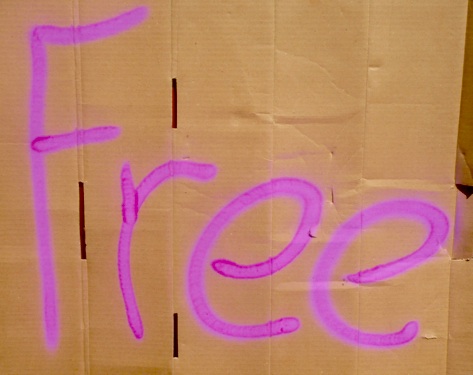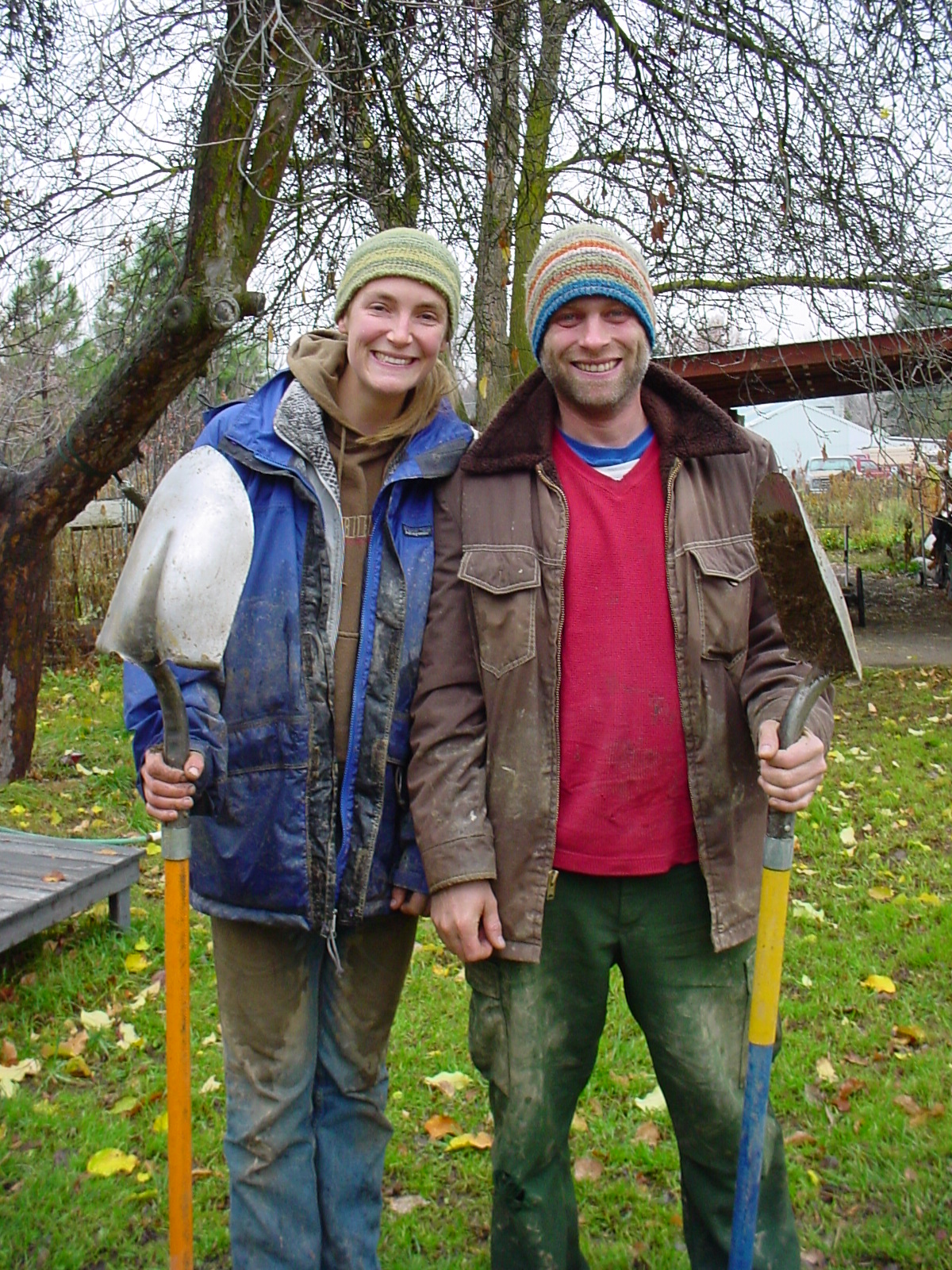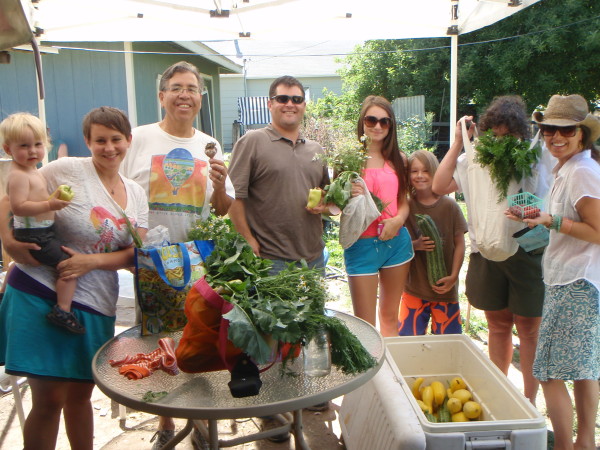 Spring has sprung, and with it comes the surge of offers for “free garden space” from well-meaning homeowners. As interest in “local food” grows, more and more people are looking at their land through new eyes, for the potential it holds for food production. This is an exciting shift, and one which holds tremendous potential. However, straddling the divide as I do between farmer and landscaper, I think it is important to clarify the differences between landscaping and farming in order to help everyone—landowner and prospective gardener—gain some clarity.
Spring has sprung, and with it comes the surge of offers for “free garden space” from well-meaning homeowners. As interest in “local food” grows, more and more people are looking at their land through new eyes, for the potential it holds for food production. This is an exciting shift, and one which holds tremendous potential. However, straddling the divide as I do between farmer and landscaper, I think it is important to clarify the differences between landscaping and farming in order to help everyone—landowner and prospective gardener—gain some clarity.
Though landscaping and farming/gardening are in essence the same thing—stewarding land that another person owns who does not want to steward that land him or herself—they couldn’t be more different in the way they are viewed and compensated in our culture.
As a landscaper caring for ornamental plants, I earn $35/hour working that land, a rate which is seldom questioned and widely accepted as just the price of things, much as you would pay a doctor or a heater repair person.
As a farmer producing food, I am not offered compensation by the landowner, and am sometimes asked to actually pay for the privilege of stewarding their land for them. This is also generally accepted as the way of things, I suppose because it is assumed that I will be earning money from the food I will be growing, which is where my compensation will come from. As we all know, farming doesn’t pay well, but to be fair, a small farm operation does generate some income, so it’s not a totally off-base assumption. However, there are differences between a farm and a vegetable garden in your back yard, which is partly the point of this article.
While this dichotomy between landscaper as steward and farmer as steward deserves a thorough reexamination in our culture, until that time comes, here are a couple of questions to ask if you are a landowner considering whether you’re in need of the services of a farmer or a landscaper:
1. How much land do I have available to be used for a garden?
In rural areas, it is common for people to own farmland which they lease to farmers. These are large tracts of land that are laid out for production farming—they’re cleared and graded, with irrigation systems in place. In our urban setting, pieces of vacant or underutilized land are much smaller, often surrounded by fences or other obstacles which make using equipment in them difficult. They also often have access only to expensive city water or are shaded much of the day by large trees. Potential farmers must learn to observe these things before agreeing to steward a piece of land.
A small garden plot, say 20’ x 20’, or a couple of raised vegetable boxes, is not useful from a farming standpoint. It can certainly supplement a single family’s diet, and is of course a valuable asset on a piece of land, but I believe it falls under the same category as a lawn or a shrub border—a part of a parcel that is the responsibility of a homeowner to take care of. If they do not wish to take care of it, the person they need to seek help from is a landscaper, not a farmer. It is widely acceptable to hire a company to mow and fertilize a lawn, to trim trees or shrubs, and weed ornamental flower borders. This small amount of garden space should be treated no differently. It is barely enough for one family’s consumption. A typical farm would use at least this amount of space per CSA member.
That’s not to say an agreement between an individual homeowner and a neighbor who would like a little more space to garden can’t be amicably reached. What raises concerns for me is the number of these types of offers that are forwarded to me through email or facebook as viable options for farmers.
2. What are my aesthetic desires for the space?
Much of the time these offers for “free garden space” include some caveats about how the land will be tended. Often they include some requirements about weeding the garden. Again it is crucial to make a distinction between landscaping and farming here. From an organic farming standpoint, eliminating weeds is not necessary for producing a good crop, and farmers must balance weeding with the other demands on their time, working more from a standpoint of weed thresholds and reducing weed pressure on sensitive crops than on keeping the farm completely weeded. A weed-free garden plot falls neatly under the landscaping category, just like weed-free borders and lawns.
Home gardeners often have weed-free gardens, at least early in the season, because they like to putz in their gardens—it’s a form of recreation or relaxation for them. When a person invites another person to garden their land, that person doesn’t have the same thing invested in it—they’re not looking at it during dinner on the patio or mindlessly pulling weeds while chatting to a distant relative on the phone in their jammies. They’re doing that at their house, in their yard, if they have one.
Going elsewhere to garden is like going to a job. And when your job is as a landscaper and you’re getting paid by the hour, you will take whatever time the homeowner desires to make sure they have a beautiful, weed-free space. When you’re doing it for “free,” you’re balancing that with all the other demands of your life. Many home gardeners become tired of weeding their gardens mid-way through the season—why should it be any different for a gardener who isn’t getting paid to weed your land?
I’ve actually had landowners where I’ve been farming their (big enough, with ample irrigation water) land complain that the garden doesn’t look nice enough when they have parties and they want to walk their friends out to see “their” farm. Again, this is where the aesthetic desires become the territory of a landscaper, not a farmer. That there are hundreds of pounds of food coming out of that land each week and no crop is being choked out by weeds is as good as it’ll get for me as an itinerant farmer. Anything else is an attempt to create a Sunset magazine fantasyland. Believe me, I’d love to live in one of those too, but if I’m going to put that kind of meticulous time and attention into a landscape, it’s going to be my own or one I get paid to work on.
Because a farm isn’t completely weed free does not mean a farmer isn’t being an excellent steward of the land. It means that person is balancing a task list that’s far longer than the available hours in a day, and that their basic need for an income will sometimes necessitate doing other things besides weeding, like harvesting, washing, and distributing produce.
Which brings me to the last question…
3. What are your demands of the person/people you’re asking to garden your space?
These offers for “free garden space” often specify that they’re looking for a “responsible” person, a “conscientious” person, to come tend the garden. Of course, no one wants to open up their personal property to a sketchball. Still, if the answers to the above two questions point more toward needing a landscaper, then you may be disappointed in the way a person, even a conscientious one, does this work for free.
This is where it gets really prickly for me, so forgive what are obviously some deep scars coming through here. The above points circle around a set of unspoken values we hold as a culture about class. There is an idea that a person who owns a piece of land is somehow superior to one who may work it. The Benevolent Landowner mindset; the idea that a landowner does a farmer a favor when s/he graciously allows them onto his/her land to farm. There is some truth to this—if a person doesn’t have their own land and wants to farm land, then you are doing them a favor by providing them that land. But again, this is where the line between landscaper and farmer is a tough one for me to straddle.
If a person has more land than they want to deal with, then the farmer is absolutely doing them a favor by farming that land and not charging them money for their labor as a landscaper would. Years ago, I calculated the number of hours we spent on our farm plots, divided as it was then between three plots of land. If each of my landowners would have paid a very modest landscaper wage of $25 per hour for the time we spent tending their land, each landowner would have paid $21,000 per year, and we would have made $63,000 per year from the farm without selling a single vegetable. As it was, the farm brought in about $16,000 in revenue that year.
Food is tricky. Some argue that access to healthy food should be a human right. More and more of us wake up each day to the idea that we could be growing more food on our land, and that local food will create a strong, resilient community. We can look around our city with new eyes, seeing every vacant patch, every underutilized corner, as having the potential to feed us and our neighbors. How we each navigate the intersections of land ownership and land stewardship will be as varied as we are, but I hope this article can at least help to put some of the issues surrounding it into context, matching the right land owner with the right land steward.










